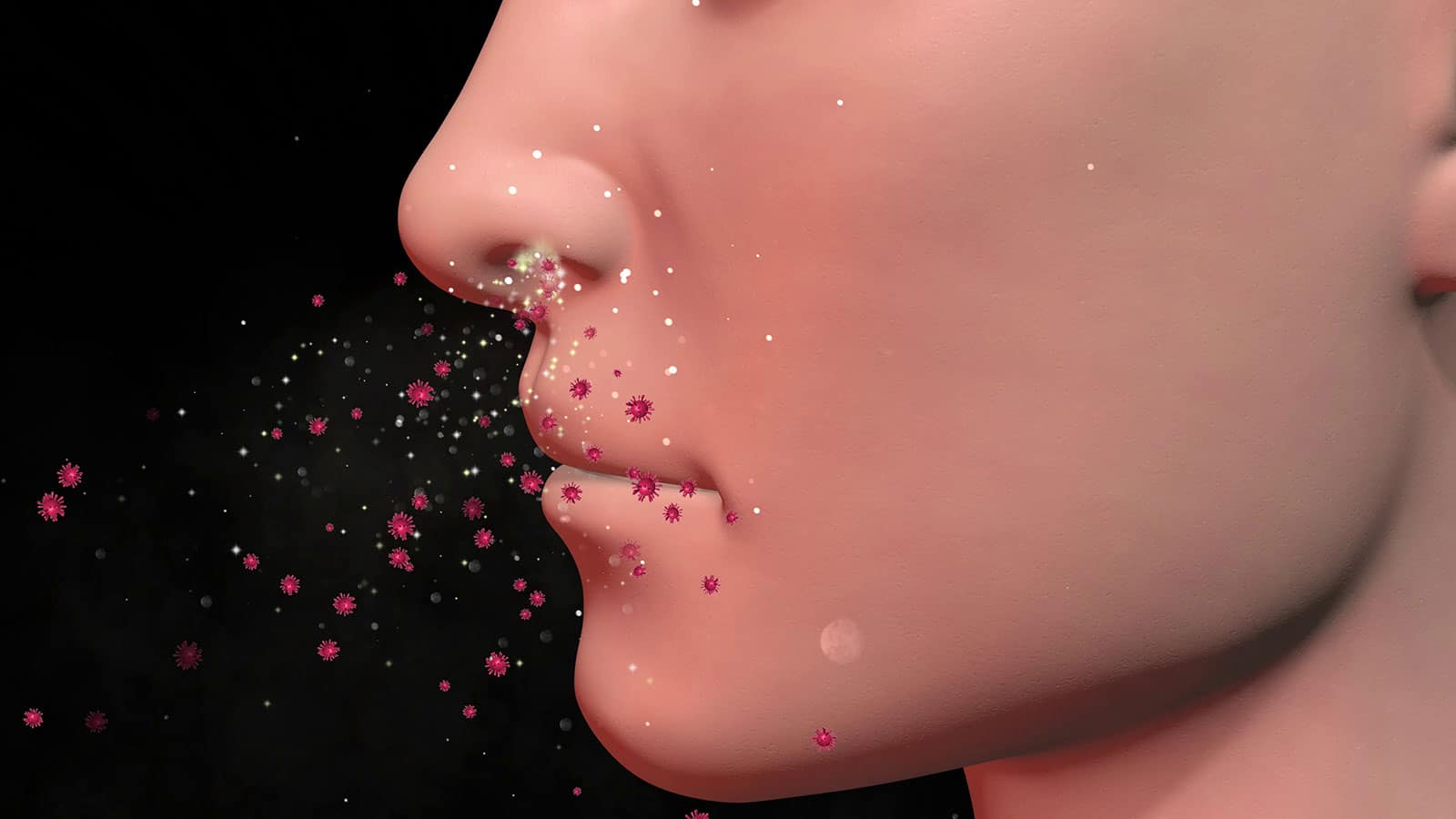Crack cocaine is a distinctive substance that you can use multiple senses to identify. Its harsh chemical scent, one of its most telltale traits, can linger in the air for hours after use. It also has a highly recognizable solid crystalline form that tells you about both its production process and its consumption method. Even the eponymous sound it makes when you smoke it is unmistakable, and its pungent taste can serve as another strong cue.
In this article, we’ll explore the sensory characteristics of crack cocaine. We’ll examine its distinct smell and find out how it interacts with your other senses to help you better recognize its presence and understand its impact. Let’s crack wide open the cocaine case and sniff out a few facts about how to use our senses to recognize this notorious drug.
Understanding Crack Cocaine
What Is Crack Cocaine?
Crack cocaine is a potent stimulant that affects your central nervous system, giving you an intense but short-lived high. A crystallized form of cocaine, crack is smoked rather than snorted, which leads to rapid absorption into your bloodstream through your lungs. Its name comes from the crackling sound it makes when you heat it.
Your lungs are filled with about 300 million tiny air sacs called alveoli, clustered together like grapes. If you were to flatten out all these clusters, the total surface area of your lungs would be about the same size as a tennis court. This incredible compression gives your lungs highly efficient gas exchange, and crack can reach your brain around 19 seconds after you inhale it. You’ll feel its maximum psychotropic effects only about two minutes later, and the full high lasts about 10 to 15 minutes.
Crack produces this immediate and powerful euphoria by hacking your brain’s dopamine system:
- Dopamine is a chemical messenger, called a neurotransmitter, that transmits signals in your brain and body related to pleasure and reward.
- Normally, once a dopamine signal has passed on its message, it gets reabsorbed back into the neuron that released it, which is called reuptake.
- Crack cocaine blocks this reuptake process, causing dopamine to build up between your neurons and give you an intense rush.
- The euphoric effect fades fast, often leaving you with a strong desire to recapture the high, which can rapidly lead to addiction and other health and social problems.
Crack cocaine emerged in the U.S. in the 1970s, developed as a cheaper alternative to purer powdered cocaine. By the 1980s, its immediate and total gratification helped it infiltrate communities across the country. Its highly addictive nature soon led to controversial anti-drug legislation with long-lasting effects on U.S. society.
Chemical Composition
Crack cocaine and powdered cocaine are two forms of the same drug. Powdered cocaine is a more expensive fine white powder that users generally inhale through the nose, which gives you a slower onset and more prolonged effects. Cheaper crack cocaine comes in jagged chunks or crystals ranging in color from white to yellow to pale rose. Crack is often smoked using a small pipe for a rapid, fleeting rush, which is more likely to cause intense cravings and compulsive use.
Both substances begin as cocaine base, an active alkaloid extracted from the dried leaves of the coca plant, found mainly in South America. To produce the base, manufacturers generally crush coca leaves and combine them with an alkaline substance like baking soda, an organic solvent like kerosene or gasoline, and water. After a vigorous mixing, they discard the water and leaves and add an acid like sulfuric acid to remove leftover solvents. They then leave the mixture to dry, resulting in a sticky coca paste.
To refine coca paste into powdered cocaine, they dissolve the paste in hydrochloric acid, add potassium salt to separate impurities, and then let the solution dry into a powder. The hydrochloric acid makes the cocaine base water soluble, which is better for snorting or injecting, but also raises the vaporization temperature, making it impractical to smoke.
To make smokable crack cocaine, manufacturers dissolve and boil powdered cocaine in an alkaloid solution typically containing sodium bicarbonate or ammonia. This raises the pH and reverts the cocaine to its original freebase form, which isn’t soluble in water but has a lower vaporization temperature. As the solution heats up, solid particles begin to precipitate out. When it cools back down, they aggregate into the crystalline structures we call crack.

The Smell of Crack Cocaine
The smell of crack cocaine is often described as a sharp chemical odor with distinct notes that resemble burning plastic or rubber alongside ammonia undertones. You can’t usually smell it at room temperature, but once it gets heated or ignited to smoke, the acrid scent is easy to notice and can linger for quite a while in enclosed spaces.
Some people say the smell resembles melting electronics or wiring, and others relate it to common chemical smells like paint, gasoline, solvents, or nail polish. Although these products have some of the same elements, crack cocaine includes both chemical notes and burning notes with subtle ammonia characteristics.
The exact methods and substances used during production can slightly alter the odor, but the core scent profile stays mostly the same. The final boil, which solidifies the cocaine base into crystal, may also release small amounts of one or more of the following volatile compounds that can contribute to the smell:
- Acetaldehyde, which smells like overripe or slightly fermented fruit
- Benzene, which smells musty and sweet
- Formaldehyde, which smells medicinal and sterile
Higher purity crack usually smells sharper and more concentrated, while lower purity crack generally smells more muddled. If additional cutting agents or contaminants are introduced at some point, the crack may include subtle odor variations that may smell like milk, caramel, or even vitamins.
Here are some common descriptions of the smell of a few other recreational drugs that we can contrast with the smell of crack cocaine:
- Cannabis, depending on the strain: herbal, skunky, pine, citrus
- Methamphetamine: acetone, cat urine, rotten eggs
- Heroin: sour, vinegar
- PCP: permanent marker
Interaction with Other Senses
1. Touch
Crack cocaine has a hard, brittle texture. When you handle it, it feels rough, grainy, and almost chalky. The edges of the rocks may be sharp, and they can easily break or crumble under pressure, leaving a gritty, powdery residue on your fingers. If you’re particularly sensitive and you touch it with bare skin, you might experience a mild tingling or numbing sensation, especially if it’s slightly damp or if you have cuts or abrasions.
2. Taste
Don’t taste crack. Ingesting even small amounts through your gastrointestinal tract can result in prolonged exposure in your body and potentially severe gastrointestinal distress, cardiovascular problems, and neurological effects over time. That being said, crack cocaine is generally described as having a bitter, metallic taste similar to certain over-the-counter antacids or even raw almonds with slight hints of soap.
3. Visual Identification
Crack cocaine typically looks like small, jagged rocks or crystals with a translucent off-white or yellow surface. You might see impurities embedded in the crack that look like brownish or grayish flecks. In contrast, methamphetamine crystals are generally smoother and shinier with a glassier texture.
Health and Safety Considerations
The harmful chemicals in crack cocaine smoke can irritate your respiratory tract, causing coughing, throat irritation, and shortness of breath. Chronic exposure to these fumes can lead to serious long-term health effects, including:
- Respiratory infections or breathing difficulties from damaged lung tissue
- Bronchitis
- Weakened heart function
- Higher risk of heart attacks and strokes
- Impairment of your memory, concentration, and other cognitive functions
- Mental health issues
- Organ damage
- Lung cancer
Even second-hand exposure to crack cocaine smoke can elevate your risk of these issues, particularly for children and people with pre-existing health conditions.
If you come across a substance you suspect to be crack cocaine, here are some guidelines to help you handle it safely:
- Avoid direct contact.
- Use personal protective equipment (PPE) like disposable latex gloves and a mask or respirator.
- Make sure the area is well-ventilated to disperse potential fumes.
- Don’t eat, drink, or smoke while handling it to prevent accidental contamination.
- Contact authorities or a professional waste disposal service for guidance on proper disposal in your area.
Legal and Social Implications
In the U.S., crack cocaine is classified under federal law as a Schedule II controlled substance. This means it’s illegal to manufacture, distribute, or possess it except for rare medical applications under strict medical supervision. Specific penalties and enforcement practices may vary depending on your area, ranging from fines to imprisonment.
Crack cocaine’s high potential for addiction also has a profound impact on communities and families, often leading to violence and theft, strained relationships, and child neglect. Law enforcement agencies generally focus on reducing drug trafficking, while public health initiatives try to prevent addiction through education, treatment, and rehabilitation services.
Recognizing Signs of Use
People who use crack cocaine often exhibit noticeable behavioral changes, including:
- Hyperactivity and restlessness
- Erratic or aggressive actions
- Paranoia
- Extreme euphoria followed by deep depression
Physical signs can include:
- Dilated pupils
- Rapid heartbeat
- Elevated blood pressure
- Rapid weight loss
- Diminished interest in personal hygiene and responsibilities
- Impaired functioning in daily activities, relationships, or work
Environmental clues that may suggest crack cocaine use include:
- The telltale odor we describe above
- Scorched spoons or aluminum foil
- Small glass or metal pipes
- Signs of neglect or disorganization
If you notice a few of these signs and suspect one of your loved ones is using crack cocaine, approach the situation with empathy and concern. Encourage them to seek professional help or counseling and offer to help them find a treatment program or rehabilitation support service. Confronting or judging them may lead to aggression or resistance, so it’s usually better to try to understand their situation and let them know you love them while fostering a path toward recovery and improved well-being and mental health.
Conclusion
You can identify crack cocaine through its chemical and burnt-plastic smell, its appearance as hard, irregularly shaped rocks, and its jagged, grainy texture. Try to avoid prolonged direct contact and use PPE while disposing of it, or call a professional to help.
If one of your loved ones is struggling with substance abuse, reach out to a counselor or addiction specialist to explore treatment options and support resources. Taking that first step toward seeking professional assistance is the best way to start on the journey to a healthier and more hopeful future.
Reference
- https://oig.justice.gov/sites/default/files/archive/special/9712/appb.htm
- https://pubs.acs.org/doi/10.1021/acsomega.1c01325


